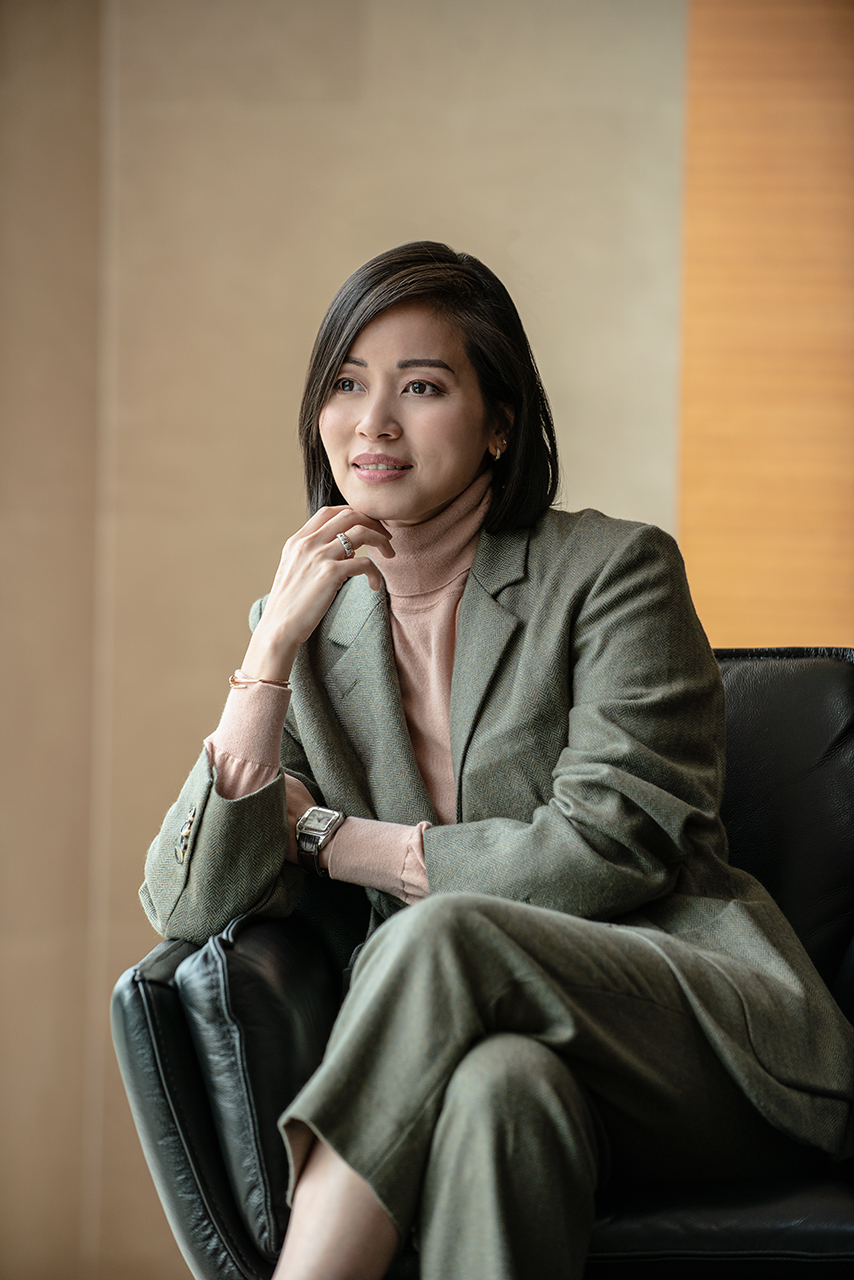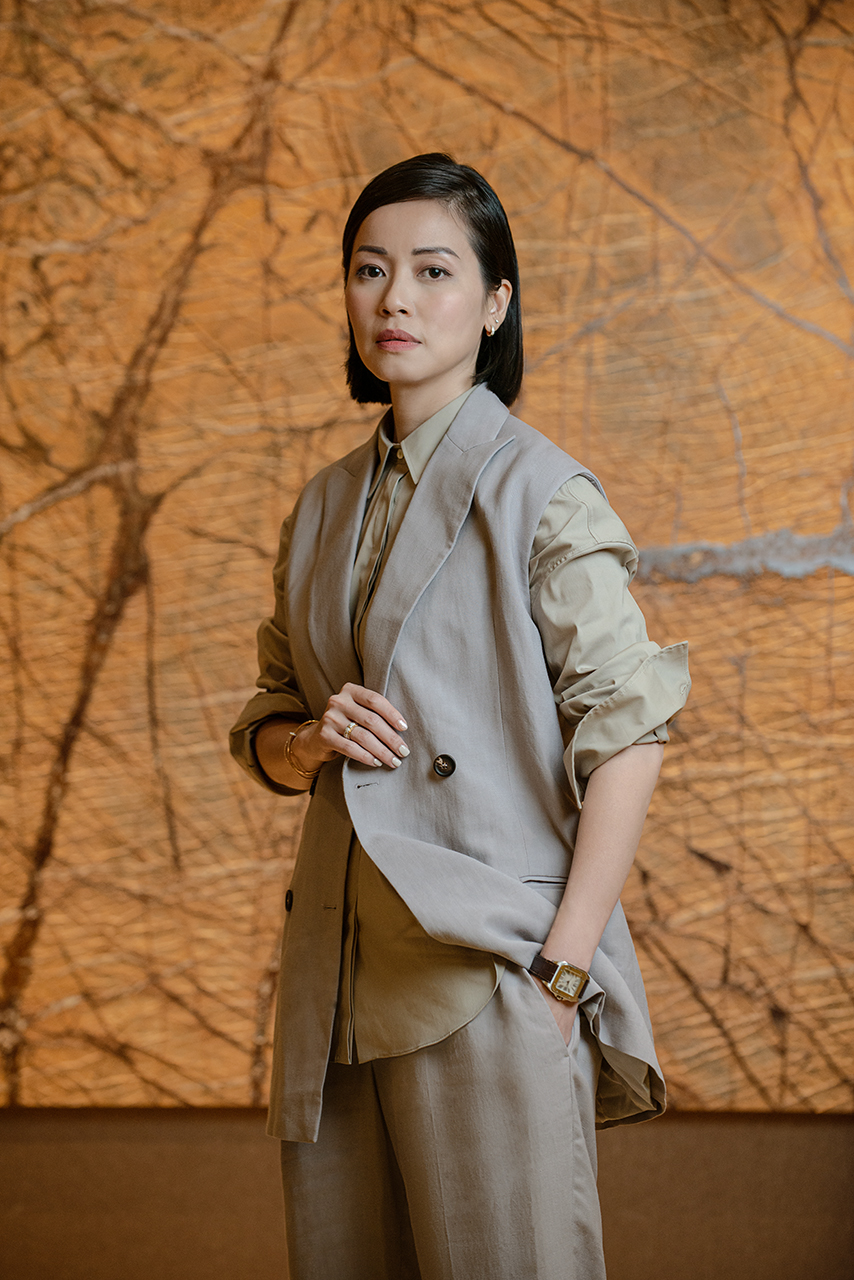When Irene Nikkein was appointed as Rolls-Royce Motor Cars’ regional director for the Asia Pacific region in August 2021, she didn’t realize she was making waves as the first female in that role in the 118-year-old history of the luxury British marque.
Rolls-Royce has been a wholly owned subsidiary under the BMW Group since 1998 and Nikkein is one of a rare few who have worked with the three major brands within the group. Just before joining Rolls-Royce, she was heading MINI Japan’s brand communication and product management team. Currently based in Singapore where the Asia-Pacific office is headquartered, she oversees operations in diverse major markets like Australia, India, Indonesia, Singapore, Japan, and South Korea.
As one with a foot on the pedal and an ear to the ground, Nikkein opted to spend her first two-and-a-half weeks at Rolls-Royce’s administrative headquarters and manufacturing plant in Goodwood, West Sussex, despite a 14-day quarantine awaiting when she returned to Singapore. During that time, she leveraged on the proximity of factory and office colleagues to dive into the brand’s values and market potential, from observing trending colors and bespoke requests to learning more about the challenges on the production floor.
“Although I’ve been with the BMW Group for almost 16 years, the first six to nine months felt as if I've entered a new company. I didn’t know anyone here and I had to build new relationships,” she says.
 Outfit by Loro Piana
Outfit by Loro Piana
Nikkein’s appointment comes at a point of remarkable growth and development for Rolls-Royce. In 2022, it launched the world’s first fully electric Spectre super coupé and the latest version of its Phantom Series II. Its global annual sales in 2022 increased by eight per cent with a delivery of 6,021 motor cars. The Asia-Pacific market, which accounts for 11 per cent of the global sales, also registered a strong 16 per cent growth last year, powered by key growth markets, such as South Korea and Australia. In Singapore, 93 cars were sold versus 90 units in 20201.
In the male-dominated automobile industry, it would be easy to assume that Nikkein would either need to behave like one of the boys or charm her way to be heard. But this leader who believes in making purpose-driven decisions while building relationships exudes a quiet confidence in knowing the value she brings to the table.
The Indonesia-born, Singapore-bred Nikkein confessed that she was puzzled at first when people asked how she felt about being the brand’s first female regional director. She jokes: “I felt people were more excited about my job than I was, because honestly, I never felt that my gender was a differential.”
“Women don’t have to be strong and hard to prove a point or be fearful of being seen as weak or vulnerable. One should never change your style just because the gender in the room gravitates either towards a male or female majority. Your leadership style should be who you are.”
(Related: In her shoes)
Still, being the only female in a room of men can be an advantage, she added, recounting a time where she had walked into such a meeting. Instead of feeling intimidated, she had quipped: “Well, that’s a lot of diversity”, which elicited chuckles from the men present. “It’s true that women do things differently. You can bring a lot of smiles and laughter and help people to look at the positive side.”
Nevertheless, the mother of a 10-year-old girl has observed a stark gender difference when it comes to C-suites who are parents.
“In the boardroom, we fight the same way. We challenge the same way. We have the same 24 hours as everyone. But the high-ranking males tend to have a female partner at home taking care of the family, so when they get home after an intense day, they do the nice part of parenting like storytelling. When a mom like me goes home, I’m the evil godmother always asking my daughter if she has packed her bag and done her homework.”

“One should never change your style just because the gender in the room gravitates either towards a male or female majority. Your leadership style should be who you are.”
The topic of work-life balance inevitably comes up and Nikkein, whose job scope naturally entails frequent travel, doesn’t mince her words. “The phrase is overly used. We need to be fair to ourselves and to the company and job we’ve chosen. At the same time, my management never dictated when I had to travel, it was up to me.”
When Nikkein’s daughter remarked that she only had time for work and not her, and she fell ill for 20 days during a three-week vacation, she knew she had to change the way she worked. “I had an honest heart-to-heart talk with my direct manager, who told me: ‘I hope you have a life beyond the work life’. That hit me hard. I can work very, very hard, but what makes it sustainable? I’ve to consciously draw boundaries.”
She now allows her personal assistant to flag out tight spots in her travel schedule and she also requested for a career coach from the company. She says, frankly: “Don’t be shy to ask for help when you need it. I wasn’t having a mental health issue, but I recognize where my strengths and weaknesses are and needed a coach to be a sounding board.”
One of the biggest lessons she has learnt is that a leader does not need a 100 per cent following. “Usually, 50 to 60 per cent will follow you, 20 to 30 per cent will be unsure, and there will be 10 per cent who will never follow no matter what you do,” she shared. It has helped her to focus on the purpose behind a task and push through with tough decisions. “I’m quite principled in this manner. I am very clear on what I want or don’t want. I seek for the right thing even though it might mean collateral damage in terms of people leaving or business partners not being pleased.”
With her team, Nikkein prefers to be an inspirer and she makes it clear that she does not want “superheroes” who only want to shine and not take responsibility. She says: “I prefer to use motivation to inspire my team than using a cane to punish. It gives them a deeper sense of purpose. I tell them that they are not here to support; they are drivers. I believe everyone can drive things forward.”
Her innate tendency to challenge the status quo stands her in good stead as the brand modernizes itself to become a luxury lifestyle purveyor instead of merely a motorcar manufacturer. Rolls-Royce’s customer base is becoming younger – the average age has shifted from the 50s to the 40s range – and Nikkein has observed a wider demographic from self-made techpreneurs to more female business owners buying larger models like the Cullinan SUV, Ghost and flagship Phantom, and driving the vehicles themselves instead of being chauffeured. With the Asia and Australasia regions poised to see the highest growth (33 per cent) of ultra-high-net-worth individuals and the high level of sophisticated personalization demanded by this market segment, Nikkein says: “I don’t believe what we did yesterday is good enough for tomorrow. I respect what works well, but I would also say let’s do something different. Rolls-Royce must keep increasing the value of its bespoke offerings and evolving its brand.”







 Outfit by Loro Piana
Outfit by Loro Piana






 Back
Back
